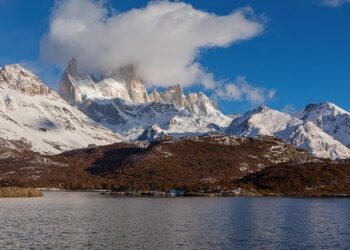Early people weathered the Last Ice Age in the significantly cooler uplands of central Spain, eschewing the warmer coastlines, according to a new archaeological survey. Its findings counter the prevailing wisdom that hunter-gatherers stuck close to the Mediterranean and Atlantic shorelines of the Iberian Peninsula, which include modern-day Spain and Portugal.
The relative scarcity of evidence for inland settlement is not because the sites themselves are scarce, a statement from the researchers said in a press release. “[It’s] a result of modern research hitherto prioritizing study of coastal regions and neglecting the inland.”
Exploring Iberia: Insights into Human Survival During the Last Ice Age
In 2018, a team led by Manuel Alcaraz-Castaño, an archaeologist and historian at the University of Alcalá in Spain, set out to correct the record by embarking on a systematic field survey of inland Iberia, the peninsula that includes modern-day Spain and Portugal. Their work led them to Guadalajara Province northeast of Madrid and close to the foothills of the Iberian System mountain range. There, they excavated five layers of sediment from the Charco Verde II site, a long strip of land positioned beneath a tall escarpment.
This place is a short hike from the Piedra River, but otherwise, it would have been a less-than-hospitable place to endure the Last Ice Age. Even in modern times, the area’s temperatures sometimes dip to below 0 degrees Fahrenheit during the winter.
Still, the team found evidence of extensive settlement, including charcoal and stone and bone tools, plus personal ornaments made using shells.
Read More: How Humans Survived the Ice Age
(Credit: Aragoncillo-del Río et al., 2023/PLOS ONE/CC-BY 4.0) The view from atop Charco Verde II during the 2021 excavation season.
The Magdalenian Culture in Iberia
Radiocarbon methods dated the deeper layers at Charco Verde II to about 21,000 years old and the shallowest to roughly 15,000 years. Some of these people, then, had lived during the Last Glacial Maximum, the Ice Age period that brought about the coldest temperatures and ended about 19,000 years ago. Dating also placed the site during the Magdalenian culture that had thrived in France and Spain between about 11,000 years and 17,000 years ago.
The Magdalenian lived in a plentiful time blessed with herds of reindeer and bison, which meant more free time for cave art and making decorative objects.
Read More: Ancient Remains Shed Light On The Iberian Peninsula’s Complicated History
Evidence of Inland Settlements in Northern Spain
The team’s survey found Magdalenian sites all over the chilly highlands of Northern Spain, ones that contained rock art or archaeological remains, enough to declare a “large cultural network,” the paper says.
The Magdalenian tended to settle along rivers in tents but also retreated to caves and rock shelters during the winter. Their settlements could grow to contain hundreds of people and came to swell the population of Europe.
Read More: Ice Ages: What Causes the Earth to Freeze Over Every Few Million Years?
>>> Read full article>>>
Copyright for syndicated content belongs to the linked Source : Discover Magazine – https://www.discovermagazine.com/the-sciences/ice-age-people-lived-in-the-hills-and-mountains-not-just-at-sea-level































